Are your palms yellow or undersized and lacking vigor? If so, chances are they are being over pruned and/or under fertilized. Palms make photosynthate (their food) from their green foliage-(fronds).
The more green fronds on a palm tree, the healthier it will likely be.
Unfortunately, many people, including some landscapers, forget to regularly fertilize their palms and think hard pruning them is desirable. And that is simply not true. As a rule of thumb, do not remove green fronds on a palm tree that originate above the horizontal
(9:00-3:00 position on a clock) on unless they are causing a visibility or safety problem. Yellow fronds, brown fronds, flowers and fruit stalks can be removed anywhere on a palm tree since they contribute little to the palm’s overall health and viability.
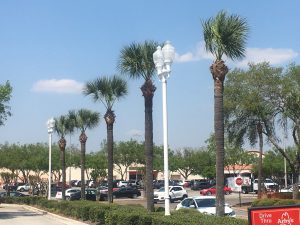
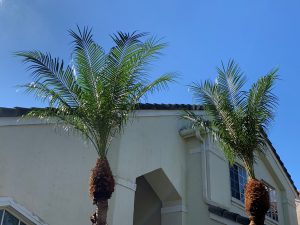
Nutritionally speaking, palms are more like turf than trees
They need to be fed regularly. We run into problems when too many palm fronds turn yellow from lack of adequate nutrients and are removed. Without supplemental nutrition in the form of added fertilizer, the palm will cannibalize any remaining green fronds as it attempts to feed the developing spear leaf which is takes priority over all other fronds.
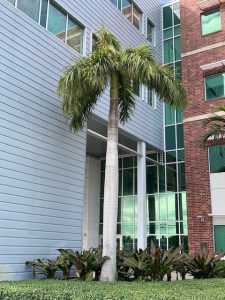
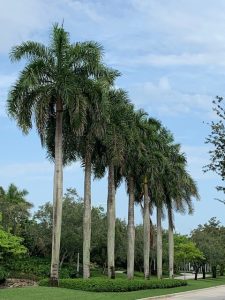
University of Florida IFAS recommends using an 8-2-12+4Mg slow-release fertilizer specially formulated for palms. Apply 15 pounds of product per 1000 square feet broadcast around the base of your palm(s) from the trunk out to the drip line three to four times per year.
After applying the fertilizer, water it in thoroughly. In addition to fertilization, yellow and/or stunted palms may also benefit from a head drench using a micronutrient product called Tech Mangam. Most arborists can provide this service. Recovery may take several months or more. Severely yellow, frizzled or stunted palms may not recover and will likely need to be replaced.
Do not over water or over mulch your palms as this can lead to suffocation
The basal trunk flare should always be visible and no lower than the surrounding grade. If the base of the trunk looks like a telephone pole (no visible flare), one can safely assume that there is too much soil and/or mulch on top of the root ball. This condition can deprive the root system of adequate oxygen. Remove excess mulch and/or soil so the basal trunk flare is visible.
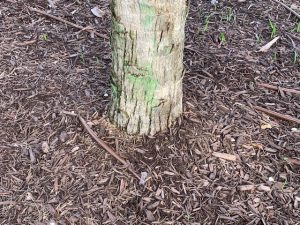
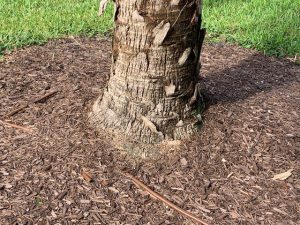
By following these simple UF/IFAS research-based recommendations, your palms should be on track to provide years of service with that iconic South Florida look.
 0
0
